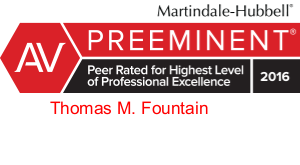Risk Shifting~Texas Contracts & Insurance Agreements
In Texas, there are two accepted ways of shifting the risk to another using contracts and insurance agreements. One is to contract it away using an indemnity clause. An indemnity agreement is a promise to safeguard or hold the one of the contracting parties harmless against either existing and/or future loss, damage or injury liability. Obviously, it contains potentially devastating financial obligations to the party offering this protection. The second method is to be named as an additional insured under the insurance policy of another party to the contract. The following is a general overview of some of the governing rules and should not be construed as legal advice on any one set of legal concerns.
The Indemnity Agreement
- The language must be express; and,
- The language must be conspicuous.
Texas long ago adopted a requirement that the parties to such an agreement had to make sure that the language used in these agreements was express, meaning that the specific language had to be used when describing to and for what they were indemnifying the other. As an example, was one party agreeing to pay for the sole negligence of another? Then this needed to be set forth in as specific terms. Then, too, the language had to be conspicuous. This means generally that the language needs to be set apart and distinguished in some manner, that capital letters and/or bold faced type should be used, etc. This law has been in effect for many years and there has been for some time, clarity afforded by the Texas Supreme Court case adopting this standard and in the subsequent Texas cases addressing this issue. There are some areas of Texas law (Section 151.105 of the Texas Insurance Code prohibit indemnity agreements subject to certain exclusions such as residential homes) and these also need to be reviewed with the client. Also, when utilizing an indemnity agreements together with an insurance policy, one should take care how they mesh…or don’t.
The Additional Insured
For many years, a insurance consumer would see clauses in contracts that required one party to be added to another policy as an additional insured. This seemed reasonable up to that point in time when the insurers started to place limiting language in their policies. There is a company called the Insurance Services Office which promulgates different generations of insurance clauses which have different interpretations and coverage available. This company is called ISO for short and the clauses they issue are called ISO forms. They are defined usually, if not always by the date the clause issued; for example: ISO CG 20 10 04 13, which is to say that the clause is an ISO form of a commercial general liability policy clause issued in 2013. This clause happens to be one that addresses the additional insured and places certain limitations on the rights of an additional insured.
The important thing to note is that there are many different forms or clauses pertaining to this coverage and others. An insurer will often place the type of clause with the policy that limits its obligations; but these are negotiable and, with the right knowledge, an insured can request a better generation or form of a clause for it’s business purposes whether it be real estate, construction, oil & gas, or other industry. The requirement for a certain form can also be, and often is, a contractual requirement set forth in an negotiated agreement between parties. For example, a subcontractor may be required to have a policy naming the general contractor and owner as additional insureds and also to obtain an insurance policy prohibiting the use of certain ISO forms. One should also make sure that the AI clause does not restrict coverage more than that required by the contract.
Summary
Careful use of these risk transfer methods produce great protection for a party conducting business in Texas. One should always tailor the contracts after a review of the specific risks, together with the industry involved and the inherent exposures.
The law firm of Thomas M Fountain & Associates, P. C. is an AV Preeminent rated law firm located in The Woodlands, Texas which is in the greater Houston metropolitan area. Thomas M Fountain has 35 years of experience upon which the firm’s clients draw when necessary. The firm prides itself on being proactive rather than reactive.
For more information see our Website at www.HoustonTrialLaw.com or call (281) 296-6500.
*Certifications not Implied.

